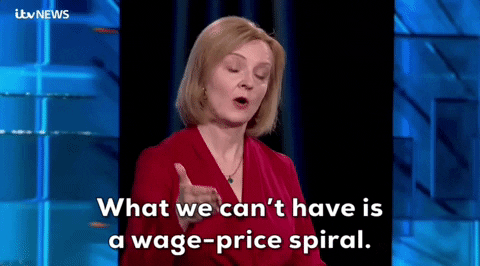If you’re keeping up with economic news, you’ve probably seen a lot of blurbs about higher wages and inflation—but why are economists so concerned about how these things interact with each other?
Let us explain the wage-price spiral. Here’s how it works:
-
To keep up with rising prices, workers demand an increase in wages (you know, so they can afford food and stuff.)
- But as companies allocate more money for labour, they also have to keep their profit margins elevated, leading them to raise the price of goods and services.
- Prices increase, workers feel squeezed again and demand another wage increase—see the spiral effect?
It’s like a dog chasing its own tail—except not adorable or entertaining. In fact, it’s what some economists call a “doom loop” since both prices and wages are “sticky,” it’s difficult to lower them once they’ve been elevated.
Yes, but: Some economists say fears of a wage-price spiral happening now are overblown considering that wage growth has stagnated compared to inflation in Canada and globally.
- Bank of Canada (BoC) Governor Tiff Macklem called out companies for raising prices more than they needed to in a time when consumers couldn’t determine the difference between a generalized increase or profit-price inflation.
Bottom line: Don’t be dissuaded from asking for that cost of living raise when the time comes—earning a livable wage will not tank the economy.
